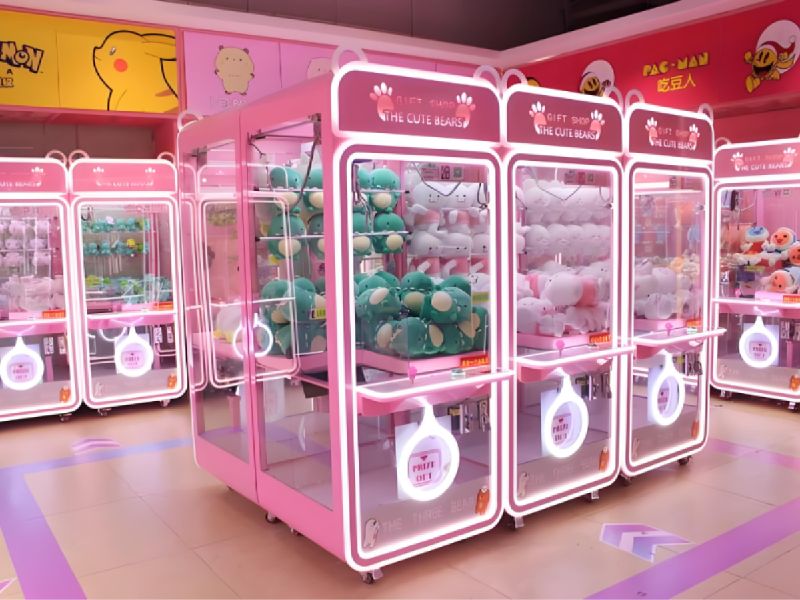If you’ve ever walked through a mall, arcade, or even a restaurant in the U.S., chances are you’ve seen a crowd gathered around a claw machine. People of all ages can’t resist the thrill of trying to “catch a prize.” Maybe you’ve wondered if this could be your next business idea—but then the questions start piling up: Where do you begin? How many machines should you buy? And will the profits really be steady?
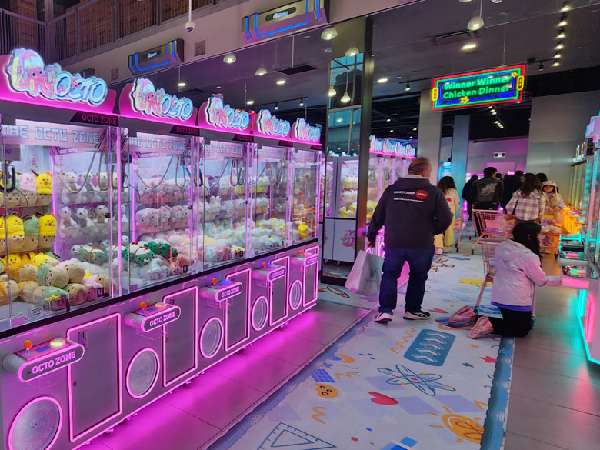
Reports from Business Research Insights show that the global claw machine market hit $2.72 billion in 2024 and is projected to reach $5.71 billion by 2033, with an impressive CAGR of 8.6%. With such rapid growth, claw machines stand out as one of the most attractive startup options today. They offer low upfront costs, flexible operations, fast payback, and high entertainment value. Still, success doesn’t just happen—you’ll need a clear strategy before jumping in.
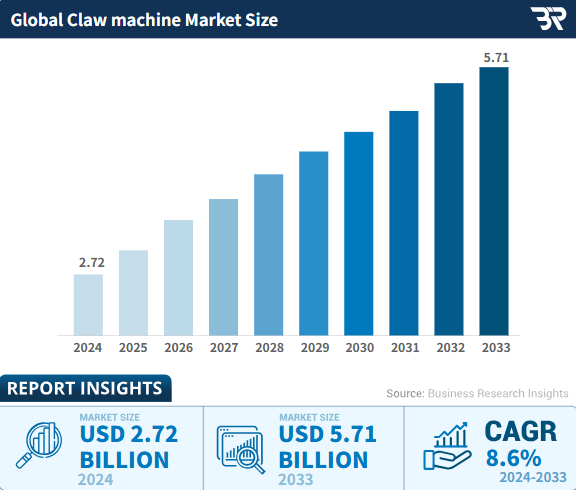
At GM Arcade, we’ve helped clients around the world launch their claw machine businesses, with many starting from scratch. Drawing on their real-life experiences and our years of export expertise, we have put together this step-by-step guide on how to start a claw machine business. We’ll walk you through six essentials—market opportunities, business models, location selection, machine sourcing, payback cycle, and compliance—so you can avoid costly mistakes and start strong.
Part 1. How to Choose Location and Business Model
The claw machine business has massive potential, but two factors will ultimately decide how much you make: location and business model. Even with the best machines, poor placement or the wrong strategy can prevent your profits from growing.
1) Picking the right location
Foot traffic is king. The best spots are places where people have time to spare or are simply waiting.
- Shopping malls: Shoppers strolling around are easily drawn to bright lights and eye-catching prizes.
- Movie theaters: Before or after a film, people often have 5–10 minutes to play.
- Restaurants: Hotpot and buffet diners waiting for tables are perfect candidates.
- Entertainment venues: KTV, bowling alleys, and arcades already have the right atmosphere for claw machines to blend in naturally.
If you’re just starting with a limited budget, place a few machines in these high-traffic areas. Many operators also set higher win rates at first—it’s a smart way to build excitement and test the waters.
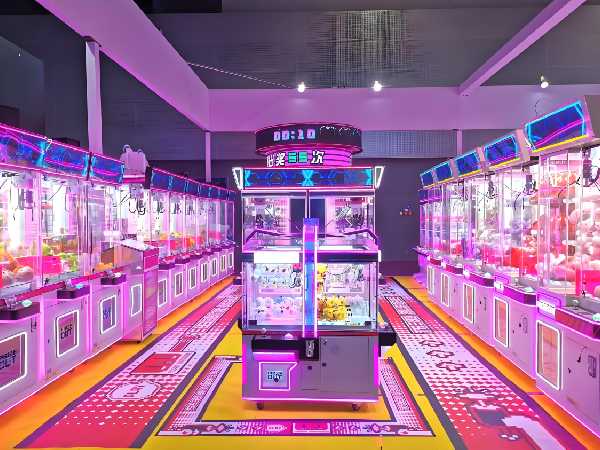
Claw machines are also popular in the rental market. Mini and lightweight models are often used at family gatherings, birthday parties, or weddings to add a playful vibe. They’re compact, easy to transport, and quick to set up, making them great for event planners and rental companies.
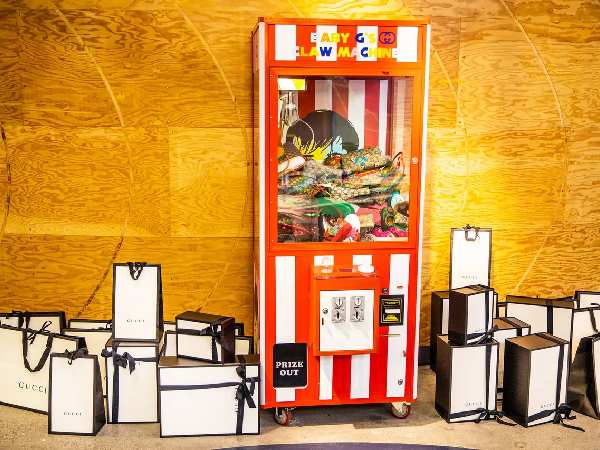
2)Choosing your business model
There are two main ways to run a claw machine business: self-operated or revenue-sharing.
Self-operated model
In this setup, you purchase and maintain the machines yourself, which means you also keep 100% of the profit. The main advantage is complete control over your business, from machine placement to revenue. However, it also demands more upfront capital and ongoing effort, making it a better fit for operators who are ready to invest more time and money from the start.
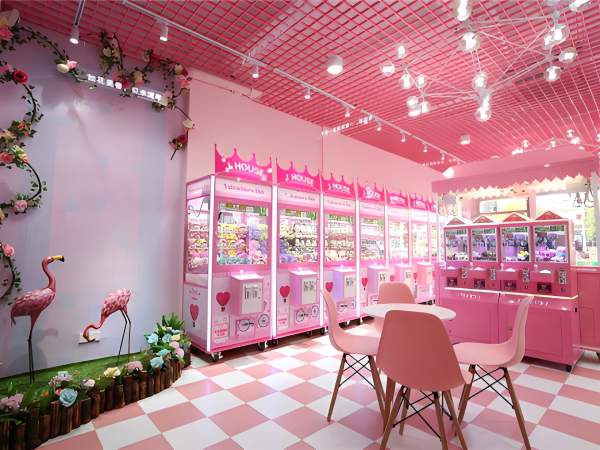
Revenue-sharing model
With this approach, you place claw machines in venues like restaurants or shopping malls and share the earnings with the owners. Based on our experience, the split usually falls between 15% and 30%. Anything above that can seriously cut into your profits. This model reduces financial risk and is especially beginner-friendly, making it a smart entry point for newcomers.
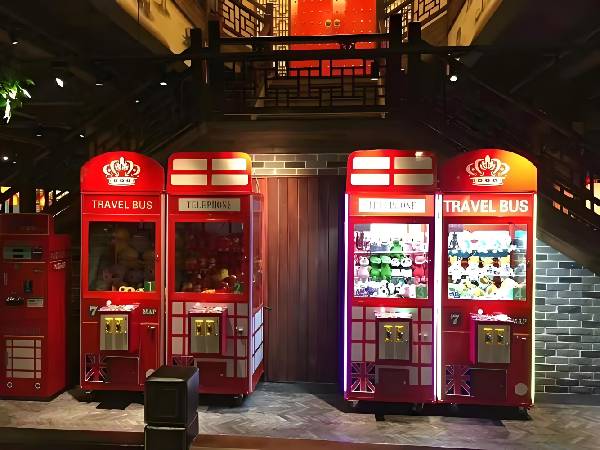
Most first-time operators start with revenue sharing to minimize risk, then shift to owning more machines once they learn the ropes. Some of our clients began with just two or three machines. Within 6–12 months, they scaled to 20+ machines across different locations and saw their profits skyrocket.
Part 2. How to Choose the Right Claw Machines
Once you’ve figured out your location and business model, the next step is choosing the right machines. This decision is critical because not every type of claw machine works in every setting. From standard single-player units to flashy dual-player models and compact mini machines, each type serves a different purpose.
1)What Types of Claw Machines Are There?
Among the different models, standard machines remain the most popular choice. They’re reliable, versatile, and can be placed almost anywhere—from malls and cinemas to restaurants—making them a safe starting point for most operators. For locations that demand more attention, dual-player or deluxe machines are a stronger option. With their larger size, brighter lights, and extra features, they create an immediate sense of excitement and are especially effective in arcades or large shopping centers.
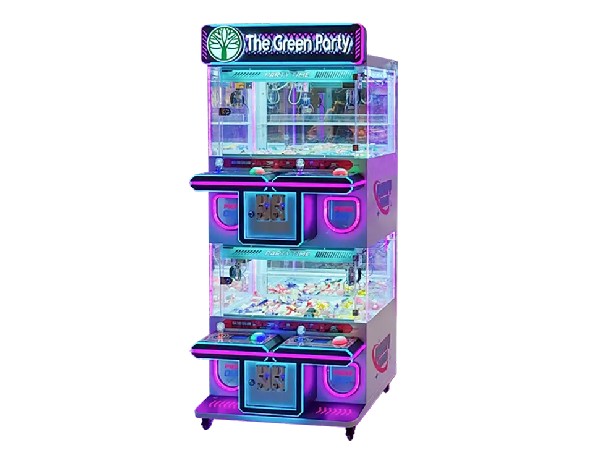
At the other end of the spectrum are mini machines. Compact and easy to move, they work well in convenience stores, bubble tea shops, or near playground entrances. While they don’t bring in as much per play as the bigger models, their quick turnover and fast payback often make them surprisingly profitable for small spaces.
2) What Features Should You Look For?
Beyond size and appearance, the features of a claw machine can greatly affect how easy it is to operate. Payment options are usually the first thing to check. In China, QR code payments are the norm, but in Western and Middle Eastern markets, players expect to use credit cards, NFC, or even Apple Pay and Google Pay. That’s why a machine that supports coins, bills, QR codes, and cards is often the most practical choice if you want flexibility across different regions.
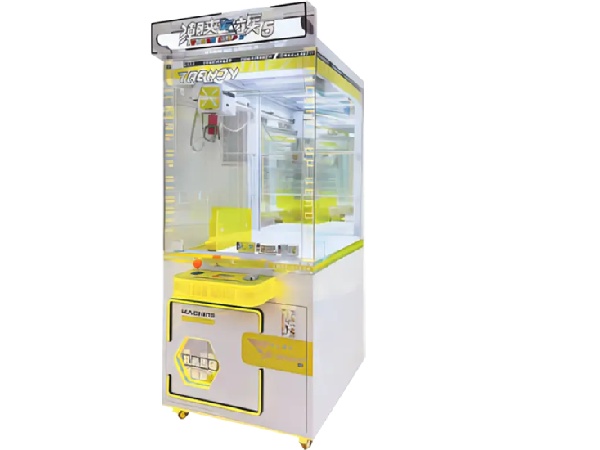
Just as important are the features that shape the player experience and your daily operations. Adjustable claw strength lets you fine-tune win rates, while customizable appearance and lighting make your machines more eye-catching in busy venues. Easy maintenance is another must-have, since a stable machine that’s simple to service will save you countless headaches down the road. Many newcomers, however, fall into the trap of buying cheap or second-hand machines to cut costs. These often break down more frequently and raise long-term expenses, turning what seemed like a bargain into a costly mistake.
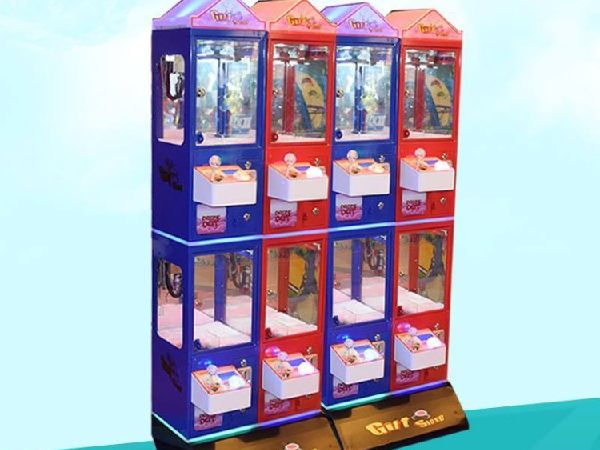
3) Buying strategy
From a cost perspective, sourcing directly from Chinese factories is usually the smartest move. Discussions on Reddit often highlight how operators value China-supplied machines for their affordability and customization options. At GM Arcade, we provide a full range of popular claw machine models and can also customize design, lighting, and branding so your machines stand out and attract more players.
Part 3. Costs and Profitability
Running a claw machine business involves two main types of costs. The first is your one-time initial investment, which covers machine purchase, shipping, and installation. The second is your ongoing operating costs, including venue commission or rent, prize restocking, regular maintenance, and electricity.
A simple way to calculate profit is:
Profit = (Price per play × of plays) − (Prize cost + Venue commission + Maintenance expenses)
To understand how quickly you’ll recover your investment, you can also use the payback period formula:
Payback Period = Initial Investment ÷ Net Monthly Profit
This formula gives you a clear picture of how many months it will take to cover your upfront costs and start generating real profit.
In the end, claw machine profits don’t rely on luck. Success comes from careful cost control and smart operating strategies. By breaking down the s and understanding your revenue against expenses, you’ll know exactly how sustainable your business can be.
Part 4. Policies and Compliance
Claw machines are regulated differently depending on the country or region, and these rules directly determine whether you can operate legally—and how profitable your business will be.
In the United States, for example, regulations vary by state. Florida Statute 849.161 clearly defines claw machines as “skill-based games,” and the retail value of each prize must not exceed $5. Anything above that would classify the machine as a gambling device, subject to stricter control.
In Europe, safety and fairness are the main concerns. The EU EN 13814 standard requires amusement equipment to pass structural and safety certifications before it can be placed in malls or entertainment venues.
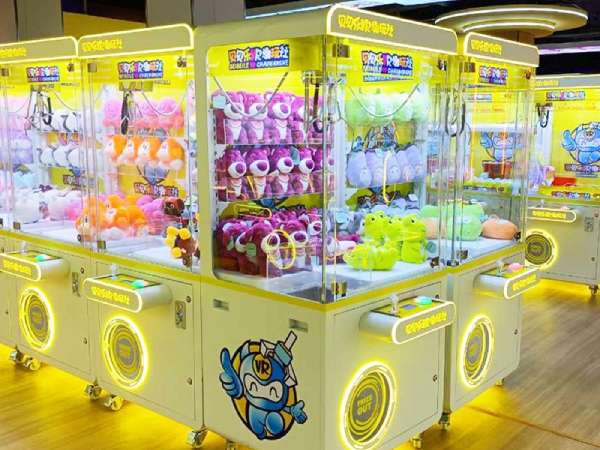
In parts of Asia and the Middle East, claw machines are often considered “chance-based devices.” As a result, operators may need temporary permits or may face higher revenue-sharing rates when entering malls or tourist attractions. Since these rules vary widely, it’s critical to check local regulations before investing to avoid unexpected compliance risks.
At the end of the day, success in the claw machine business isn’t just about the machines or the locations—it’s also about compliance. At GM Arcade, we provide the necessary certifications and compliance support for different markets, helping our clients launch their businesses smoothly and legally.
Conclusion
The claw machine business is growing fast, and the key to success lies in three things: choosing the right location, planning a suitable business model, and picking machines that match each setting. Once you master these essentials, profitability becomes not just possible but predictable.
As a professional claw machine manufacturer and wholesaler from China, GM Arcade offers a wide range of models and customization services to help you launch and expand with confidence. Whether you’re just starting or looking to scale up, we’re here to support you every step of the way.
And here’s a bonus for newcomers: our minimum order starts from just one unit, available through the end of 2025. This means that even if you only want to test the market or simply use a machine at home, you can still reach out to us for product information and support.
